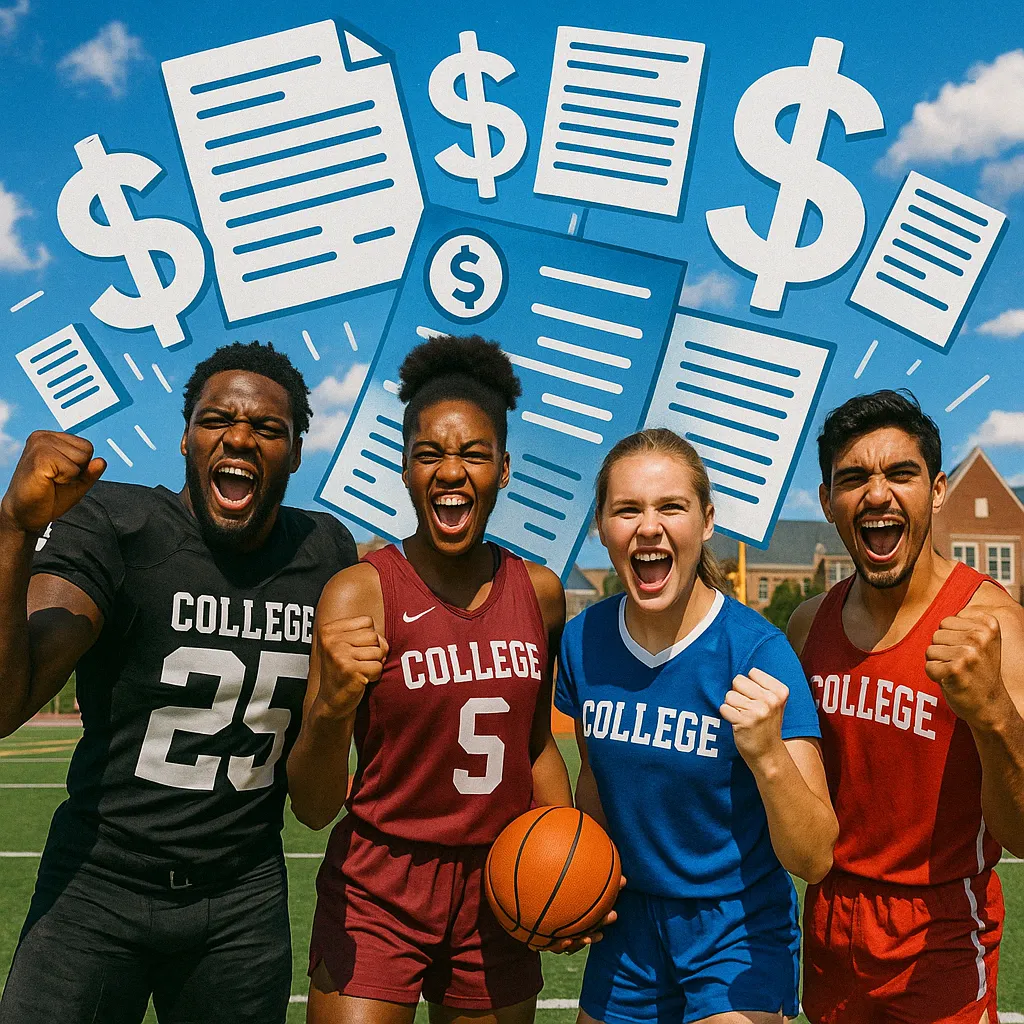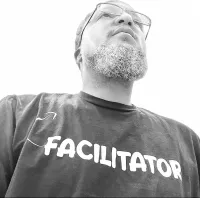

Your Success, Our Priority
Browse our articles below
Make sure to request our FREE Role Player Guide to Recruiting
Click the more stories button for additional articles

NCAA Settlement on NIL Revenue Sharing Faces Legal Hurdles and Raises Questions for Student-Athletes
NCAA Settlement on NIL Revenue Sharing Faces Legal Hurdles and Raises Questions for Student-Athletes
The landscape of college athletics stands at a pivotal crossroads as the NCAA settlement, which would permit direct NIL revenue sharing with student-athletes, faces a barrage of legal objections. This proposed agreement, covering nearly 390,000 athletes, promises to reshape the collegiate sports ecosystem by introducing a $2.8 billion damages fund and allowing Division I schools to compensate athletes for their name, image, and likeness. However, the path to final approval is fraught with complex legal, ethical, and practical challenges that demand careful scrutiny from coaches, student-athletes, and parents alike.
Legal Objections and the Future of Athlete Compensation
At the heart of the current debate are the objections raised by various legal representatives and advocacy groups. These objectors have filed a dozen responses challenging the fairness and legality of the settlement, particularly focusing on the new roster limits and the duration of the agreement. The settlement’s 10-year term has drawn criticism for potentially infringing upon the rights of future athletes, who may find their ability to object or opt out significantly constrained. Legal experts argue that due process and antitrust principles require a more robust mechanism for future student-athletes to voice concerns before the agreement becomes binding.
Another contentious issue is the introduction of roster limits, which would replace the NCAA’s traditional scholarship caps. While the settlement’s proponents argue that this change could lead to more scholarships being available, objectors warn that thousands of current walk-on athletes may lose their spots on Division I teams. This shift could have immediate and profound effects on high school recruits, some of whom have already been informed that previously available roster spots will no longer exist. The legal battle over these provisions underscores the high stakes involved for all parties in the collegiate sports community.
Implications for Coaches, Student-Athletes, and Parents
For coaches, the uncertainty surrounding the settlement’s approval complicates roster planning and scholarship allocation for upcoming seasons. The potential for last-minute changes to team composition places additional pressure on coaching staffs to adapt quickly, while also maintaining transparent communication with current and prospective athletes. Student-athletes, particularly walk-ons and incoming freshmen, face an environment of heightened anxiety as they navigate shifting eligibility and scholarship criteria. Parents, too, must grapple with the implications for their children’s athletic and academic futures, seeking clarity in a rapidly evolving regulatory landscape.
The settlement’s impact extends beyond immediate roster decisions. It signals a broader transformation in the relationship between athletes and institutions, as direct NIL revenue sharing becomes a tangible reality. This shift challenges longstanding norms and compels all stakeholders to reconsider the value proposition of collegiate athletics. The legal wrangling over the settlement’s terms highlights the need for ongoing advocacy and vigilance to ensure that the interests of student-athletes remain at the forefront of policy decisions.
Title IX and Gender Equity Concerns
One of the most persistent objections to the settlement involves its compliance with Title IX, the federal law mandating gender equity in educational programs and activities. Critics argue that the proposed damages allocations may inadvertently perpetuate disparities between male and female athletes, raising questions about the settlement’s alignment with established legal standards. While the presiding judge has expressed sympathy for these concerns, she has also noted that the current lawsuits do not provide a direct legal basis for addressing Title IX issues within the settlement framework.
This ongoing debate underscores the complexity of balancing financial compensation with broader equity considerations. As the NCAA and its member institutions move toward a new era of athlete empowerment, ensuring that gender equity remains a central priority will be essential for maintaining the integrity and inclusivity of college sports.
Procedural Challenges and the Role of Due Process
The procedural aspects of the settlement have also come under intense scrutiny. Objectors contend that the process for notifying and allowing objections from future athletes is insufficient, potentially violating fundamental principles of due process. The current proposal would notify each new cohort of athletes annually, granting them a 60-day window to file legal objections. However, critics argue that this approach fails to provide meaningful recourse for individuals who may be affected by the settlement’s provisions years after its initial approval.
Legal experts emphasize that any settlement of this magnitude must adhere to rigorous standards of fairness, transparency, and accountability. The ongoing litigation serves as a reminder that the rights of student-athletes cannot be bargained away without robust procedural safeguards. As the court deliberates on the final approval of the agreement, the outcome will set a precedent for how future disputes over athlete compensation and institutional responsibility are resolved.
College Football Playoff and Broader Implications
The role of the College Football Playoff (CFP) in the settlement has emerged as another flashpoint in the legal proceedings. Attorneys representing high-profile athletes have challenged the sufficiency of the settlement’s language regarding the CFP, arguing that athletes need more comprehensive information to make informed decisions about opting out. This dispute has the potential to delay the implementation of the settlement and create additional uncertainty for schools and conferences as they prepare for the upcoming academic year.
Beyond the immediate legal and logistical challenges, the settlement’s resolution will have far-reaching implications for the governance of college sports. It represents a critical test of the NCAA’s ability to adapt to changing legal and cultural expectations, as well as the capacity of student-athletes to assert their rights in an increasingly commercialized environment. The outcome will shape the future of athlete compensation, institutional accountability, and the broader social contract underpinning collegiate athletics.
What Student-Athletes and Families Should Know
As the legal process unfolds, student-athletes and their families must remain vigilant and informed. The evolving nature of the settlement means that eligibility, scholarship opportunities, and compensation structures may change rapidly. Staying connected with coaches, compliance officers, and legal advisors is essential for navigating this period of uncertainty. Proactive engagement with advocacy organizations and peer networks can also provide valuable support and guidance as new developments arise.
For those considering collegiate athletics, understanding the implications of the settlement is crucial for making informed decisions about recruitment, enrollment, and long-term career planning. The shifting landscape presents both challenges and opportunities, demanding resilience, adaptability, and a commitment to personal and collective advocacy. By staying informed and engaged, student-athletes and their families can help shape the future of college sports in ways that reflect their values and aspirations.
Key Takeaways for Coaches and Athletic Programs
Coaches and athletic administrators must prepare for a period of significant transition as the NCAA settlement moves toward resolution. Strategic planning, transparent communication, and a commitment to athlete welfare will be essential for navigating the uncertainties ahead. Programs should review their scholarship and roster management policies, ensuring compliance with evolving legal standards and best practices. Investing in education and support services for student-athletes can help mitigate the potential disruptions associated with the settlement’s implementation.
Collaboration with legal counsel and compliance experts will be critical for interpreting the settlement’s provisions and anticipating future regulatory changes. By fostering a culture of adaptability and proactive problem-solving, athletic programs can position themselves to thrive in the new era of NIL revenue sharing and athlete empowerment.
Looking Ahead: The Future of College Athlete Compensation
The outcome of the NCAA settlement will reverberate across the collegiate sports landscape for years to come. It represents a watershed moment in the ongoing struggle for athlete rights and institutional accountability. As legal challenges continue to shape the contours of the agreement, all stakeholders must remain committed to the principles of fairness, equity, and due process. The decisions made in the coming months will define the future of college athletics, setting the stage for a more just and inclusive system that recognizes the contributions and aspirations of student-athletes nationwide.
Resources & Community
🎯
Follow Facilitate The Process on Facebook
https://www.facebook.com/facilitatetheprocess/
🌐
Join Our Recruiting Community
🔗
Get Started Today

